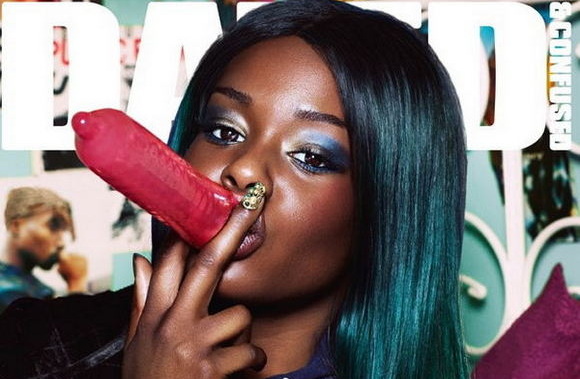When we flip through magazines at the checkout line, we may not always consider the intricate thought process that goes into each cover. Yet, the history of magazines is littered with controversial magazine covers that ignited fervent discussions, ruffled feathers, and, in some cases, pushed boundaries. Over time, they have acted as a mirror to societal change, reflecting the shifting tides of culture, politics, and public opinion.
Visual storytelling has always been an essential part of human history. From cave paintings to Instagram feeds, we have always been drawn to images. Magazine covers, while simple at first glance, are powerful tools in this ongoing narrative, holding the potential to influence, inspire, or infuriate.
Whether it’s a political magazine cover bearing a striking illustration or a fashion magazine showcasing an unconventional model, these audacious front pages often become talking points, etching their place in pop culture. Some covers aim to spark conversation about woke culture, others strive to shock, question societal norms, or highlight contentious issues.
A controversial magazine cover often serves a dual purpose. On one hand, it’s a daring statement, a beacon of the magazine’s stance on certain issues. On the other, it is an undeniable ploy to boost sales through sheer curiosity and shock value. Either way, these magazine covers work — they get people talking, arguing, and reflecting. In fact, you’ll often see these covers resurface years, even decades, later in retrospectives and pop culture analyses.
Brace yourself as we journey through some of the most provocative and shocking magazine covers that pushed the boundaries of convention. And remember, a picture is worth a thousand words, but a controversial magazine cover? That can launch a thousand debates. By the way, this list is not in any particular order.
10 – Time Magazine – June 27, 1994 – OJ Simpson
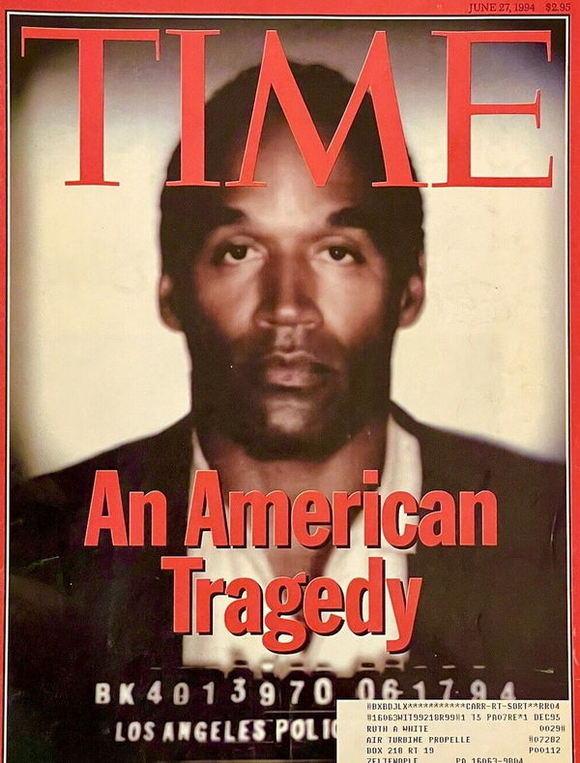
Diving into the realm of controversial magazine covers, the Time Magazine cover from June 27, 1994, stands out. This particular edition featured a mugshot of OJ Simpson, who was immersed in a notorious murder trial at the time.
What made this cover so controversial wasn’t the subject matter, but rather the creative editing. Critics argued that the image was unjustifiably darkened, potentially echoing harmful racial stereotypes. This alleged demonization of Simpson was widely perceived as a racially biased act.
The backlash was swift and severe, shining a spotlight on editorial ethics. This cover, now infamous, underlines the significant power that images hold, especially when it comes to shaping public perception in high-stakes scenarios like legal proceedings.
09 – Rolling Stone – February 2006 – Kanye West as Jesus Christ
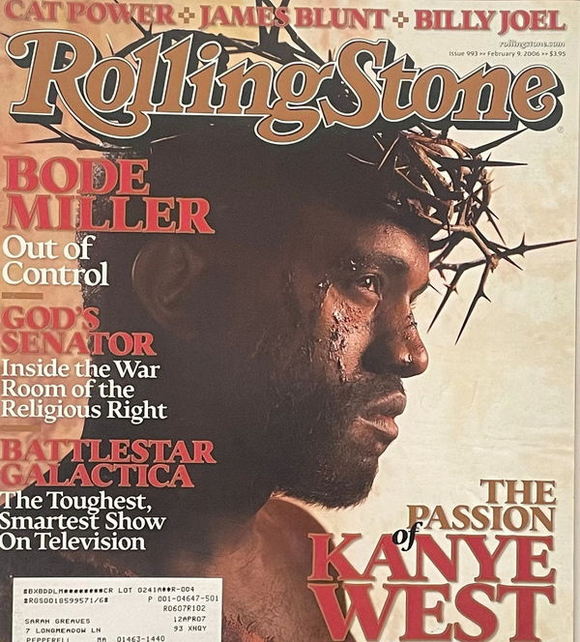
On to another controversial magazine cover – the February 2006 issue of Rolling Stone, featuring none other than Kanye West. Known for his knack for causing a stir, West did just that with this cover, where he is depicted wearing a crown of thorns, mirroring the iconography of Jesus Christ.
The cover ignited a firestorm of controversy, with critics decrying the image as blasphemous and inappropriate. However, it was very much in line with West’s audacious personality. Moreover, it sparked discussions around the role of religion in pop culture, celebrity worship, and the artistic freedom of musicians.
08 – Dazed & Confused – September 2012 – Azealia Banks
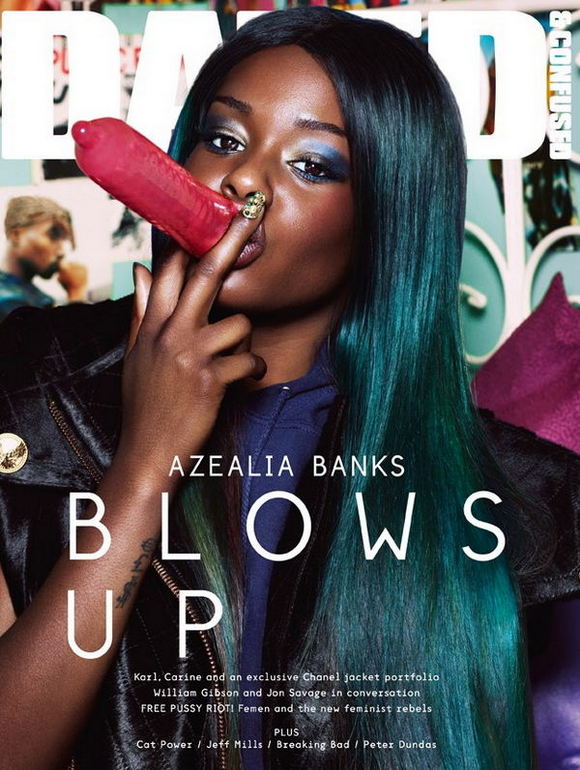
The September 2012 issue of Dazed & Confused is yet another entry in the list of controversial magazine covers. This one featured the fearless and unapologetic Azealia Banks in a striking pose – with an inflated bright pink condom between her lips.
This daring cover caused the magazine to be banned in seven countries, with critics labeling it as overly provocative due to its sexual overtones. Nevertheless, it also stimulated conversations around sex, femininity, and the freedom of female entertainers to express themselves as they see fit. In many ways, this cover embodies Banks’ rebellious spirit, marking its spot in the history of controversial magazine covers that boldly pushed the boundaries of societal norms.
07 – Esquire – May 1969 – The Drowning of Andy Warhol
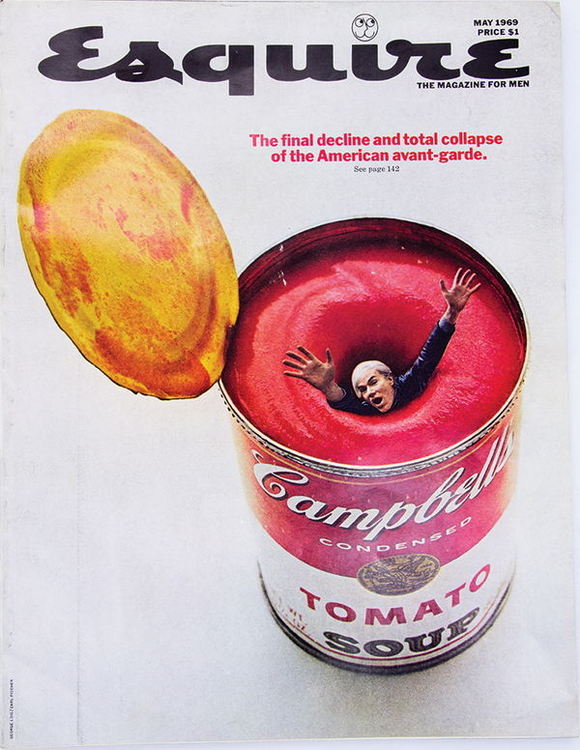
One cover that stirred up waves in the controversy magazine landscape was the May 1969 issue of Esquire, starring the pop art icon, Andy Warhol. Warhol, known for his unconventional artistic approach, was illustrated on the cover drowning in a can of Campbell’s Soup, his most famous motif.
While it might have been a playful nod to Warhol’s iconic art, critics argued that it was in bad taste, making light of a life-threatening situation. Despite the criticism, this cover, like Warhol’s art itself, engaged people, spurring debates about the line between art and insensitivity.
06 – Time Magazine – April 8, 1966 – Is God Dead?
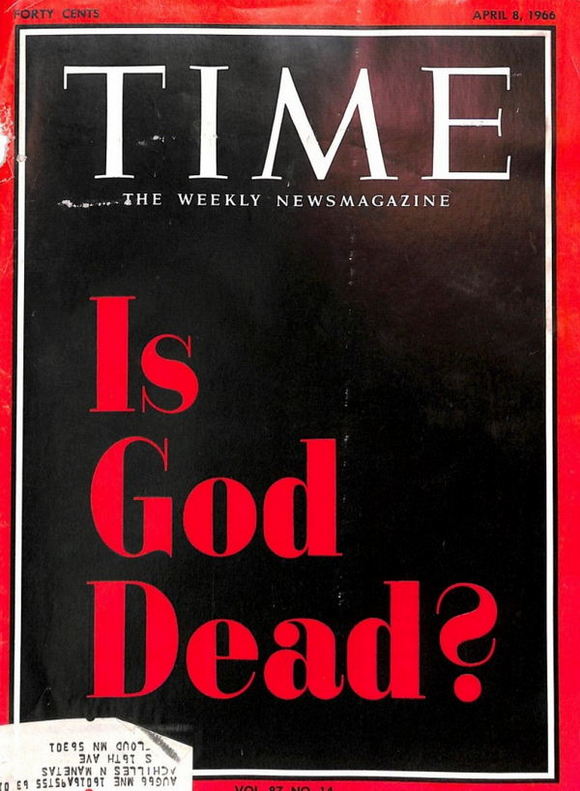
Few magazine covers have rocked the world like the April 8, 1966 issue of Time Magazine. The stark, black cover bore only three words – “Is God Dead?”. A striking departure from Time’s usual cover style. It dared to question the relevance of God in the modern era, sparking a global discussion.
Many found this cover offensive, arguing that it challenged deeply held beliefs. On the other hand, it provoked a discourse on the role of faith in society and the shifting spiritual landscape. This cover is a testament to the fact that controversial magazine covers can give rise to profound philosophical debates.
05 – Time Magazine – April 14, 1997 – Ellen DeGeneres
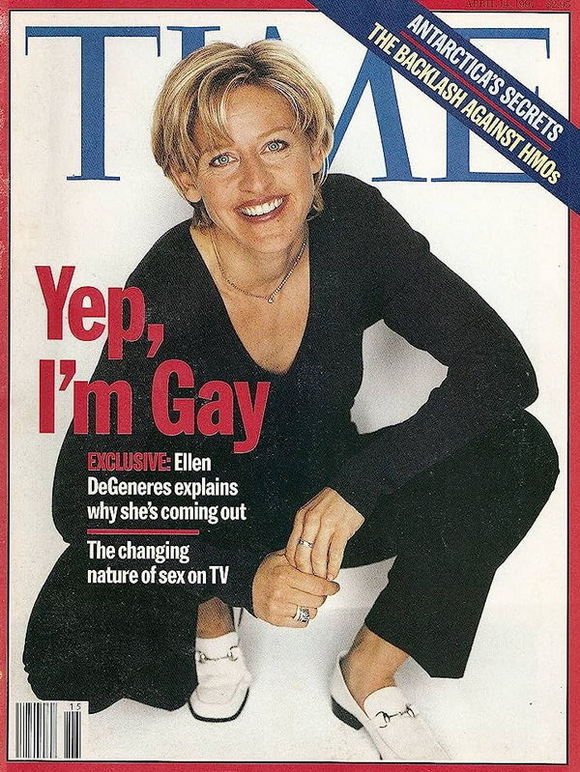
Once again, Time Magazine pushed the envelope with its April 14, 1997 issue, featuring a simple but powerful confession from Ellen DeGeneres – “Yep, I’m Gay”. This marked a pivotal moment in television history. Because DeGeneres became the first openly gay lead actor in a prime-time show.
Some conservative groups objected to this cover, stating that it was inappropriate to discuss personal sexual preferences in such a public forum. However, many applauded DeGeneres’ bravery in coming out, a significant moment in LGBTQ+ representation in mainstream media. This cover has become an iconic piece of the fight for equality. Definitely showing that controversial magazine covers can also be catalysts for positive social change.
04 – Rolling Stone – July 2013 – Dzhokhar Tsarnaev
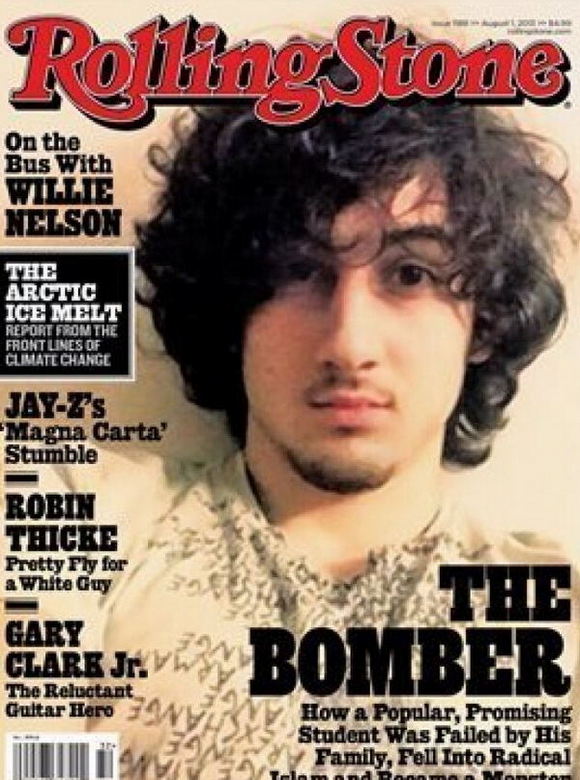
The July 2013 issue of Rolling Stone was met with instant backlash due to its controversial choice of featuring Dzhokhar Tsarnaev, one of the Boston Marathon bombers, on its cover. The cover photo, showing a boyish Tsarnaev, was criticised as it was thought to glamorize terrorism.
Critics felt it sent a dangerous message, while the magazine defended its decision, citing journalistic responsibility. This cover generated an intense debate about the ethical boundaries of journalism and the power of imagery. It is underlining the weight that a shocking magazine cover can hold in public discourse.
03 – Vanity Fair (America) – July 2015 – Caitlyn Jenner
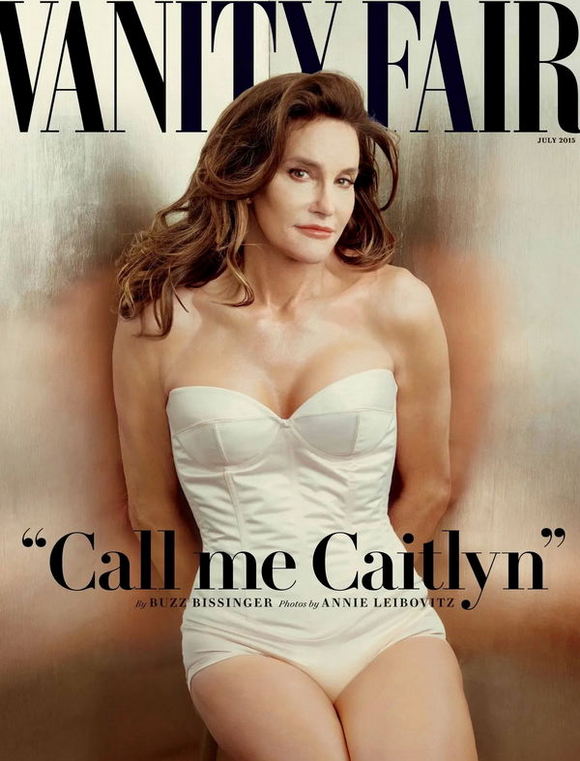
In July 2015, Vanity Fair broke the internet with a groundbreaking cover featuring Caitlyn Jenner, formerly known as Bruce Jenner. The magazine chose to introduce Caitlyn to the world, following her transition, with a simple and poignant caption, “Call Me Caitlyn”.
Some critics considered the cover too provocative, accusing it of trivializing the transgender experience. But for many, this cover marked a significant step forward in mainstream recognition of transgender identities. The Vanity Fair cover, indeed, pushed the boundaries of how the media represents transgender individuals. This is making it one of the most memorable magazine covers in recent history.
02 – Time Magazine – 9/11/01 – 9/11 Attack

The September 11, 2001, issue of Time Magazine is undoubtedly one of the most haunting covers ever published. It featured the North Tower of the World Trade Center in flames after being hit by a hijacked plane. A chilling moment from the catastrophic terrorist attacks that occurred on 9/11.
As a political magazine cover, this image was not meant to shock for shock’s sake but to document a moment that changed the world forever. Despite the graphic nature of the image, its historical importance can’t be denied. It stands as a grim reminder of a day that shocked the world, demonstrating the role of magazine covers in chronicling significant events.
01 – Time Magazine – January 2, 1939 – Hitler as Man of the Year
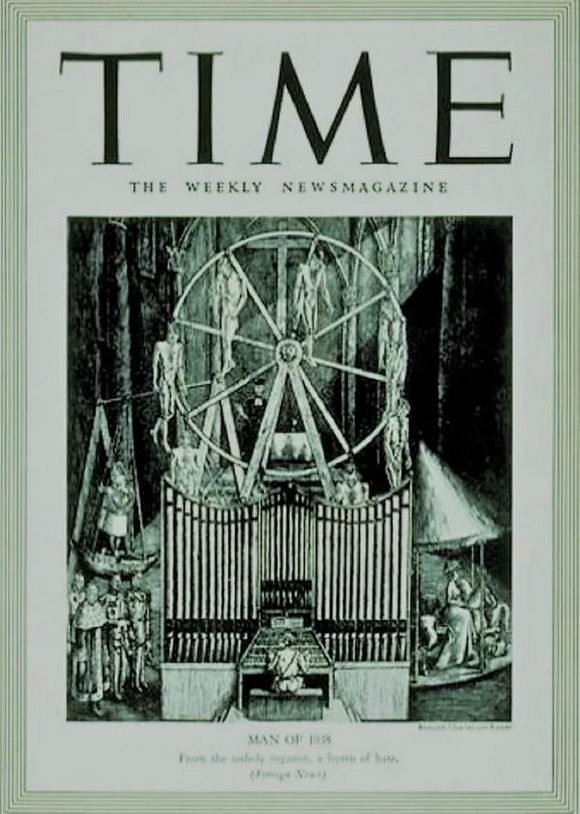
Possibly the most notorious cover in the history of Time Magazine. They featured Adolf Hitler as Man of the Year in 1939. The decision to put Hitler, the dictator responsible for World War II and the Holocaust, on the cover was met with immediate backlash.
The image was meant to highlight Hitler’s influence rather than glorify him. Still, the controversy centered around the idea that such a prestigious title could be conferred on a figure responsible for such horrific atrocities. In this context, the controversial magazine cover indeed pushed the boundaries, sparking discussions on ethics, influence, and power, and how they should be presented in media.
The Power and Influence of Magazine Covers in Documenting History
Magazine covers have the uncanny ability to capture the essence of cultural, political, or historical moments like no other medium. These controversial magazine covers that we’ve discussed offer us snapshots of society’s consciousness at different times.
Every magazine cover represents a slice of our collective memory, immortalizing the people, events, and movements that have shaped our world. Controversial or not, these covers become the visual milestones of our history, telling stories that might otherwise be forgotten.
From Time Magazine’s chilling documentation of 9/11 attacks to Vanity Fair’s groundbreaking introduction of Caitlyn Jenner. These covers have not only generated heated debates but have also encouraged us to question societal norms and strive for change.
It’s clear that daring magazine covers can indeed leave us speechless, forcing us to confront uncomfortable truths. Additionally, reevaluate our perspectives, or simply marvel at the sheer power of a single image. In the end, their impact reverberates far beyond the printed page. These magazine covers are influencing our global conversation and leaving a lasting legacy on the world.


